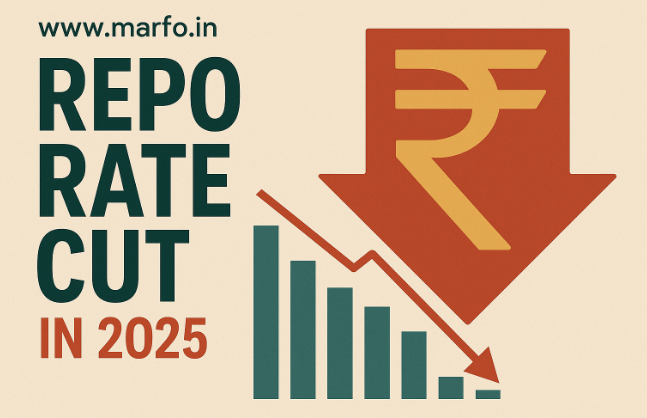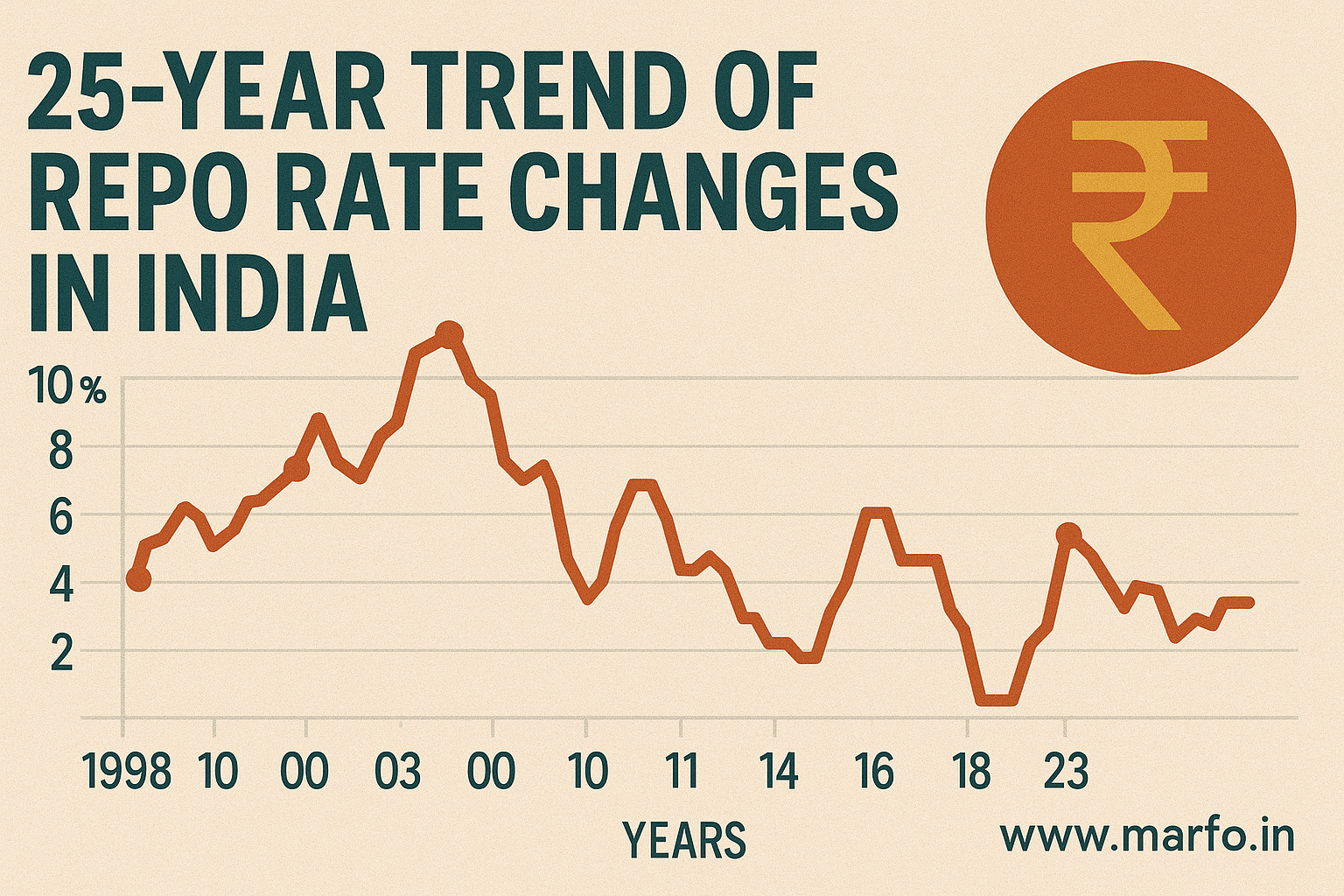RBI Repo Rate Cut in 2025: What It Means for Borrowers, Banks, and the Indian Economy

Understanding the Repo Rate
The repo rate is the interest rate at which the Reserve Bank of India (RBI) lends money to commercial banks for short-term needs. It’s a critical monetary policy tool used to control inflation, manage liquidity, and influence economic growth.
When the repo rate is lowered, borrowing becomes cheaper for banks, which in turn can reduce interest rates for consumers and businesses. Conversely, a hike in the repo rate makes borrowing more expensive, helping to cool down inflation.
RBI Cuts Repo Rate to 6.0% in April 2025
In April 2025, the RBI’s Monetary Policy Committee (MPC) announced a 25 basis point cut, bringing the repo rate down from 6.25% to 6.0%. This is the second consecutive rate cut under Governor Sanjay Malhotra, signaling a clear shift toward an accommodative policy stance
This decision comes at a time when the Indian economy is facing both domestic and global headwinds. The RBI’s move is aimed at supporting growth, improving liquidity, and maintaining financial stability.
Why Did the RBI Cut the Repo Rate?
Several key factors influenced the RBI’s decision:
1. Global Trade Pressures
The U.S. recently imposed a 26% tariff on Indian exports, particularly affecting sectors like textiles and electronics. This has created downward pressure on India’s trade balance and GDP growth 1.
2. Slowing Domestic Growth
India’s GDP forecast for FY2025 was revised downward from 6.7% to 6.5%, prompting the need for monetary easing to stimulate investment and consumption 1.
3. Tamed Inflation
Retail inflation has remained within the RBI’s target range of 4% (+/- 2%), giving the central bank room to cut rates without risking price instability 2.
4. Liquidity Support
The RBI has already injected over $80 billion into the banking system through open market operations and long-term repo operations (LTROs), ensuring that banks have enough funds to lend 1.
What Do Experts Say?
How Does This Impact You?
🏠 For Borrowers and Consumers:
- Lower EMIs: Home, auto, and personal loan EMIs are expected to decrease as banks pass on the rate cut.
- Cheaper Credit: Lower interest rates make it easier to finance big-ticket purchases like homes, cars, and education.
- Reduced Returns on Savings: On the flip side, fixed deposit and savings account interest rates may decline, affecting savers.
🏦 For Banks and Lending Institutions:
- Higher Loan Demand: Lower rates can spur demand for credit, especially in retail and MSME segments.
- Margin Pressure: Banks may face reduced net interest margins as lending rates fall faster than deposit rates.
- Improved Liquidity: RBI’s supportive stance ensures that banks have sufficient funds to meet credit demand.
Global Context: RBI Aligns with Global Central Banks
The RBI’s decision is in line with global monetary trends. Central banks in the U.S., Europe, and Asia are also adopting accommodative policies to counter economic slowdowns, trade disruptions, and geopolitical tensions.
By cutting rates, the RBI ensures that India remains competitive in attracting foreign capital and supporting export-led growth, especially in a volatile global environment.
25-Year Trend of Repo Rate Changes
To understand the significance of the current rate cut, it’s helpful to look at the historical trend of repo rate changes over the past 25 years. The chart below illustrates how the RBI has adjusted the repo rate in response to major economic events:

Key Milestones:
- 2008: Global Financial Crisis → Sharp rate cuts to stimulate demand.
- 2013: Taper Tantrum → Rate hikes to stabilize the rupee.
- 2016: Demonetization → Liquidity surge led to rate adjustments.
- 2020: COVID-19 Pandemic → Emergency rate cuts to support the economy.
- 2022: Russia-Ukraine Conflict → Inflationary pressures led to hikes.
What Lies Ahead?
The RBI’s latest move is a calculated effort to balance growth and stability. While the rate cut is expected to boost consumption and investment, the central bank will remain vigilant about inflation and global risks.
For borrowers, this is a good time to lock in lower interest rates. For banks, it’s an opportunity to expand credit portfolios while managing risk. And for the economy, it’s a step toward sustaining momentum in a challenging global landscape.

